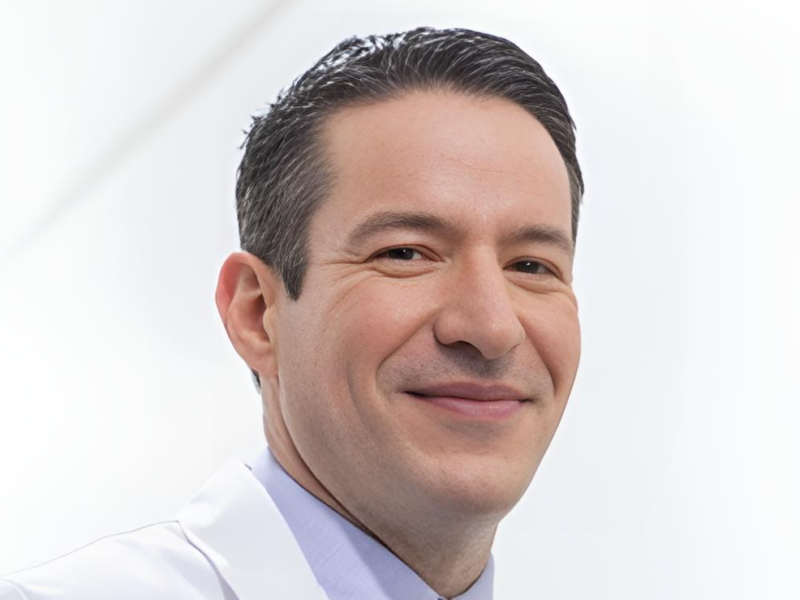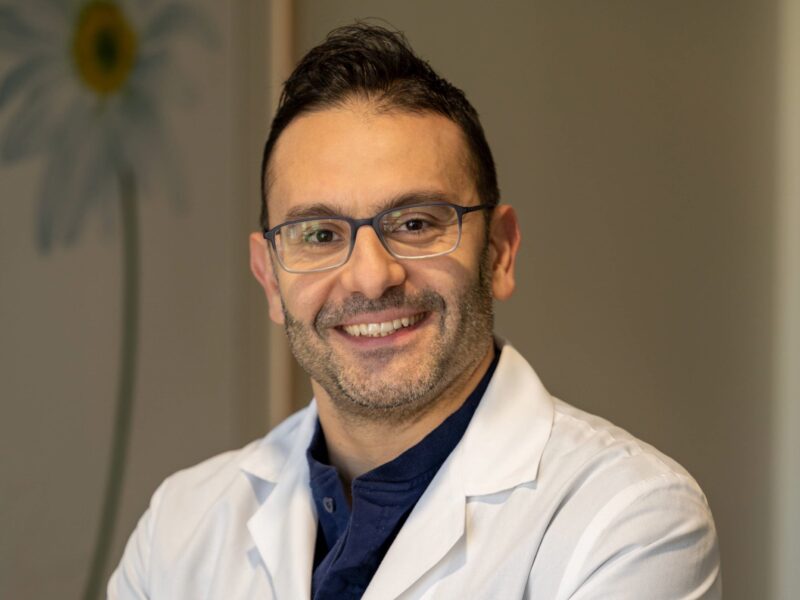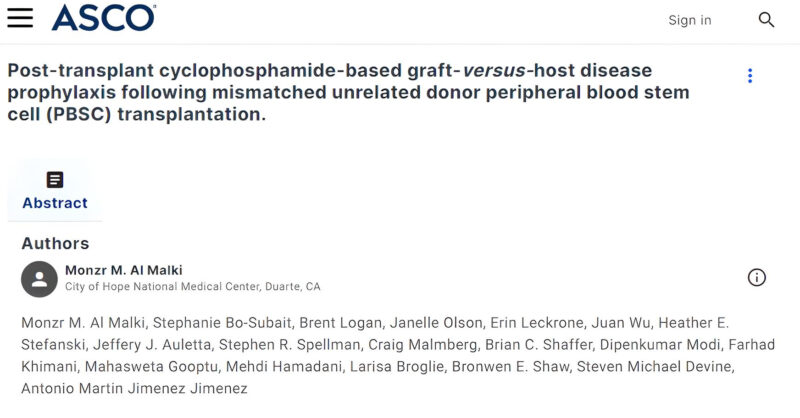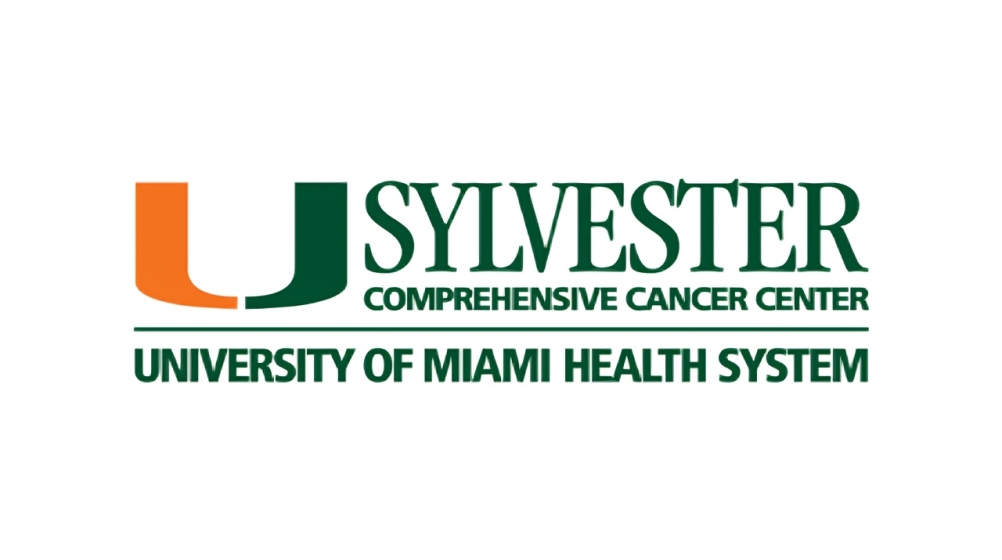Patients from underrepresented racial and ethnic groups stand to benefit the most, which is particularly relevant for medical centers with highly diverse patient populations
A new treatment approach using an older drug may enable more patients with high-risk blood cancers to receive transplanted stem cells from unrelated, partially matched donors, according to a study conducted by researchers at Sylvester Comprehensive Cancer Center at the University of Miami Miller School of Medicine and colleagues.
Results to be presented at the annual meetings of the American Society of Clinical Oncology (ASCO) and the European Hematology Association suggest the new approach may expand the donor pool, with patients from underrepresented racial and ethnic groups standing to benefit the most.
Finding a matched donor has long been a major hurdle for patients with blood cancers who need bone marrow or blood stem cell transplants.
Patients without an eligible family member often turn to the National Marrow Donor Program. The registry contains more than 40 million potential donors, but not everyone finds a match, particularly people from underrepresented racial and ethnic groups. Only about half of Hispanic and a quarter of Black patients can find a fully matched donor, compared with more than 70% of white patients.
But the search for a donor has become a lot easier with the repurposing of cyclophosphamide, an older drug. The new approach – administering cyclophosphamide several days after transplantation – is leading to successful outcomes. New data will be presented May 31 at the ASCO meeting, with findings showing high rates of success in patients receiving blood stem cells from unrelated, partially matched donors.
“The outcomes seem to be very comparable to those of a fully matched donor,” – said Antonio Jimenez Jimenez, a Sylvester clinician and researcher who has been a key primary investigator in the studies supporting the use of cyclophosphamide.

He led this study alongside researchers from the National Marrow Donor Program, City of Hope Medical Center, and Memorial Sloan Kettering Cancer Center, among other institutions.
City of Hope researcher Monzr Al Malki will present the findings at ASCO.

Jimenez Jimenez will present the data at the European Hematology Association (EHA) annual congress in Madrid, June 14.
The approach is already being taken up widely at Sylvester and elsewhere, leading to more patients finding a donor and receiving lifesaving treatment. “It’s been transformational,” – Jimenez Jimenez said.
Donor compatibility is determined by a set of protein markers on blood cells called HLAs (human leukocyte antigens). Jimenez Jimenez said HLAs are the “QR code” of the immune system. The chance that a sibling has a fully matched HLA is 25%, and the chance of a partial sibling match is 50%. With the increasing use of cyclophosphamide over the last decade or so, partially matched relatives have increasingly been successfully tapped as donors.
Cyclophosphamide counteracts a deadly side effect of transplantation called graft vs. host disease (GVHD). In this condition, the transplant mounts an immune attack on the patient. The drug is thought to mitigate the effect of the cells that mediate GVHD.
More recently, researchers have been asking if cyclophosphamide also works for transplants from partially matched donors who are unrelated. In one key previous study, Jimenez Jimenez and his colleagues showed that the drug yielded high survival rates in 80 patients receiving bone marrow transplants from partially matched, unrelated donors.
The new study assesses cyclophosphamide treatment in patients receiving peripheral blood stem cell (PBSC) transplantation. This stem cell source has largely supplanted bone marrow transplantation, partly because of the ease of donation via a procedure that collects the cells from the blood.
In this initial phase of the study, the researchers examined data from 70 adult patients with advanced blood cancers. Patients received a “reduced-intensity” conditioning regimen to prepare them for transplantation, followed by stem cells from unrelated, partially matched donors.
At ASCO, the researchers will report an overall high survival rate of 79% at one year, comparable to survival rates seen with fully matched donors. Other metrics were also promising, Jimenez Jimenez said. After one year, 51% of patients were free of GVHD and had not relapsed.

The data are “impressive,” Jimenez Jimenez said, particularly since the study enrolled high-risk patients and the average age was 65. The study was also “very permissive” with the degree of donor mismatch allowed, he said.
Donors had match levels from 4/8 to 7/8 on a one-to-eight scale, in which eight corresponds to a perfect match across eight key HLA markers. At match levels of 5/8 and above, more than 99% of people from a wide range of racial/ethnic groups are expected to find a donor.
The new approach means that more patients can find a donor and receive treatment. It also means that they can often find better donors, such as younger individuals with healthier grafts, Jimenez Jimenez said.
The findings are particularly relevant for medical centers with highly diverse patient populations, like Sylvester, the researchers said. Patients are overcoming the barriers to finding a donor in the registry, including the high proportion of white donors and the genetic diversity of mixed-race individuals, which can complicate HLA matching. Patients no longer need a perfect match.
The new findings are part of an ongoing phase 2 study enrolling about 300 patients at more than 30 medical sites, including Sylvester. Patients in a second arm of the study are receiving a more intense regimen prior to transplant, designed to ablate the bone marrow. A third arm investigates pediatric patients.
Jimenez Jimenez and his colleagues are also investigating how to optimize cyclophosphamide delivery, combine it with other treatments, minimize toxicity, and address other related questions.
Other posts featuring Sylvester Comprehensive Cancer Center on OncoDaily.
